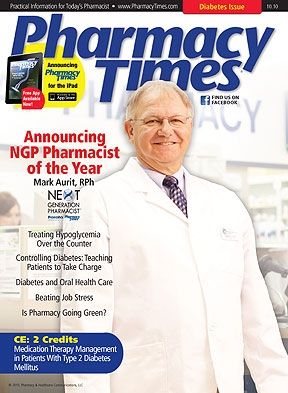Publication
Article
Pharmacy Times
OTC Case Studies


Case 1—Hypoglycemia
MG is a 58-year-old woman who presents to the pharmacy looking to refill her glyburide prescription. Upon counseling, she states the “strangest thing happened” the night before. She woke up around 3 am sweating and dizzy. Upon further questioning, she indicates that her blood sugar was 55 mg/dL at the time these symptoms occurred. She ate a turkey sandwich and drank a glass of diet soda to help bring up her sugar. What recommendations can you give MG to help her better manage her diabetes?
Answer
MG is experiencing hypoglycemia, likely caused in part by her glyburide. Several key factors can be contributing to MG’s hypoglycemia, including insufficient caloric intake, drug interactions, or physical activity, which should be explored through additional counseling. Although not all patients experience symptomatic hypoglycemia, most patients do experience symptoms such as tremors, sweating, or palpitations. The American Diabetes Association (ADA) recommends 15 to 20 g of glucose (eg, 8 oz milk, 4 oz fruit juice, 1 tablespoon sugar, or 3 to 4 glucose tablets) as the preferred treatment for mild to moderate hypoglycemia in the conscious patient able to swallow, although any form of glucose can be used for symptomatic relief in an emergency. Complex carbohydrates take longer to break down; eating a meal rich in complex carbohydrates, such as a turkey sandwich, is not recommended to treat immediate hypoglycemia. Diet drinks also do not contain the carbohydrates necessary to increase MG’s blood sugar.

For future hypoglycemic episodes, counsel MG to consume 15 g of glucose, then wait 15 minutes and recheck her blood sugar with her glucose monitor. If she is still hypoglycemic, the treatment should be repeated. Once her blood glucose returns to normal, it is recommend that MG consume a snack or small meal, if mealtime is not within 1 hour, to prevent further hypoglycemia . MG should also monitor her blood sugar frequently to prevent recurrent hypoglycemia.
Severe hypoglycemia can be serious if untreated and may result in loss of consciousness, coma, seizures, and even death. Severe hypoglycemia should be treated with glucagon; all patients using insulin should have glucagon for emergency use. Since glucagon is indicated for individuals who are unconscious, family members or caregivers should be educated on glucagon administration. 28 n 10.10 | Pharmacy Times www.PharmacyTimes.com OTC focus Case Studies Mary Barna Bridgeman, PharmD
Case 2—Monitoring Blood Glucose
DE is a 38-year-old man who comes into the pharmacy with a new prescription for short-acting insulin, which he will be injecting 3 times daily to treat his newly diagnosed type 2 diabetes. DE states he is very interested in controlling his diabetes, but fears that he will experience hypoglycemia. He asks if he should monitor his blood sugar and if you can suggest a monitor that uses alternate-site testing. What recommendations would you give DE?
Answer
It is recommended that most patients with diabetes monitor their blood glucose levels, especially patients who have type 1 diabetes, use insulin or oral medications that can cause hypoglycemia, have difficulty recognizing symptoms of hypoglycemia, are not achieving their glycemic goals, or are pregnant. According to the ADA, self-monitoring of blood glucose (SMBG) is recommended at least 3 times a day for patients using multiple insulin injections. If DE were not using insulin multiple times a day or were on noninsulin therapy, you could recommend SMBG less frequently. Most blood glucose monitors on the market are comparable; certain key factors can help determine which monitor is most appropriate. Cost is one key component, especially if the patient’s insurance provider has a preferred monitor. Other factors to consider when selecting a monitor include monitor size, blood sample size, size of display, timing, accuracy, memory, ease of use, data management and download features, alternate-site testing, battery type, and need for cleaning. Before making a recommendation, ask patients which features are important to them.
For DE, alternate-site testing is important. Many monitors allow for testing at alternate sites (ie, palm of the hand, forearm, upper arm, thigh, or calf). It is important to counsel patients when it is not appropriate to use alternate-site testing, especially when glucose concentrations are rapidly fluctuating, such as after meals, during a hypoglycemia episode, or with an increase in physical activity. Patients should only be encouraged to use alternate-site testing when they are in a fasting state before meals and more than 2 hours after physical activity or meals.
Dr. Bridgeman is an internal medicine clinical pharmacist in Trenton, New Jersey, and clinical assistant professor, Ernest Mario School of Pharmacy, Rutgers University. Dr. Patel is a clinical pharmacist in North Brunswick, New Jersey, and clinical assistant professor, Ernest Mario School of Pharmacy, Rutgers University.
References







